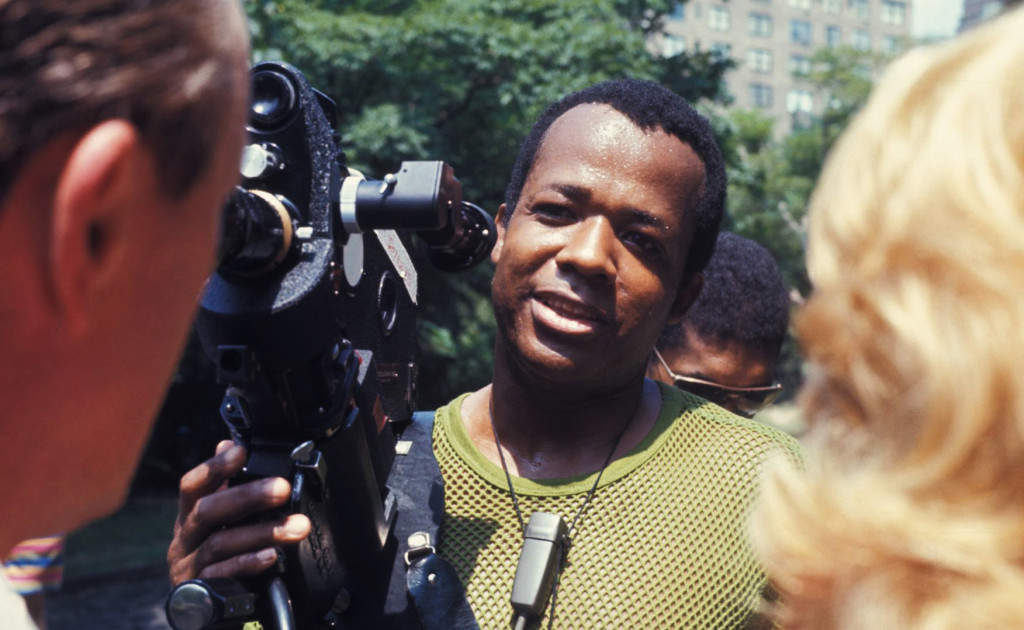‘SYMBIOPSYCHOTAXIPLASM:
TAKE ONE’
– ONE OF THE MOST
INNOVATIVE
MOVIES ABOUT
MAKING MOVIES
It is 1968; late director William Greaves (1926-2014) and his student crew are in New York’s Central Park filming a screen test. The drama involves a bitter break-up between a married couple. But this is just the “cover story.” The real story is happening “off-camera” as the enigmatic director pursues some hidden agenda, leading to growing conflict and chaos amongst the students, which explodes on screen, producing a brilliant kind of raw energy and insight.
“Symbiopsychotaxiplasm: Take One,” the cinema verite film-within-a-film, can’t be easily defined. But it’s one of the most innovative movies about making movies. It generated 1 sequel titled “Symbiopsychotaxiplasm: Take 2 1/2,” released 37 years later.
“Symbiopsychotaxiplasm: Take One” screens this weekend at the Metrograph in New York City.
A well-respected, if unheralded independent, working in both film and television, producing, directing and editing films for over 4 decades, Greaves created at the intersection of many cultural focal points, including as an original co-host and producer of the landmark “Black Journal” public television series.
He, however, is perhaps best known for his prolific work as a documentary film director and producer. He was associated with more than 200 productions during his career. His documentary films on the African American experience include classics like “From These Roots,” “Ida B. Wells: A Passion for Justice,” and “Ralph Bunche: An American Odyssey.”
His best-known film, the aforementioned “Symbiopsychotaxiplasm: Take One,” faced a lengthy road to recognition. Greaves shot the film in 1968 and completed production in 1971 in hopes of debuting it at the Cannes Film Festival that year, but, maybe incredibly, was rejected. The film then spent two decades mostly unseen before being rediscovered by a Brooklyn Museum curator who premiered it at a retrospective of Greaves’ voluminous work in cinema.
The film is a unique 1960s time capsule, a telling look at the myriad tensions involved in film creation – a film on the making of a film – with three camera crews recording different parts of the process and personalities involved (director, actors, crew, bystanders). Though Greaves is undoubtedly the film’s visionary auteur – especially notable for an African American filmmaker in the 1960s – it is a film made collectively by Greaves and his multi-racial crew, whose staging of an on-set rebellion becomes the film’s drama and its platform for sociopolitical critique and revolutionary philosophy.
Filmed entirely on location in New York City’s Central Park, with a score by Miles Davis, Greaves’ film serves as a vivid look into a significant historical era, and a memorable document of what was a creatively prosperous period of American independent filmmaking.
Greaves has been honored with many awards, including an Emmy for his work as executive producer of the pioneering public television series, “Black Journal,” and a Career Achievement Award from the International Documentary Association.
He was a long-time member of the Actors Studio, where he often substituted for Lee Strasberg as moderator of acting sessions.
His oeuvre comprises of significant social documentaries on a variety of issues, recognizing and preserving the history of a people, while also challenging the rules of filmmaking, creating a new language for documentary and dramatic cinema, thus becoming a true film pioneer.
Sadly a lot of his work isn’t readily available for rent or purchase. Easiest to find is the work that he’ll likely be most remembered for – “Symbiopsychotaxiplasm” both parts, which are available for purchase in a 2-disc Criterion Collection DVD set. I recommend you start there.
And if you’re in New York this weekend, add the Metrograph’s screening of “Symbiopsychotaxiplasm: Take One” to your to-do list. Visit metrograph.com for more info.
Watch an old trailer for the film below:


